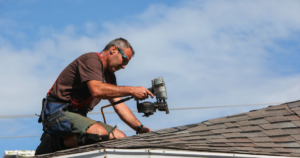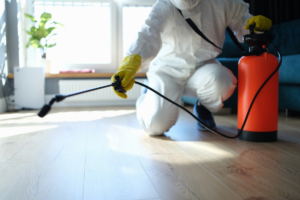Hotel Logistics is a place that offers lodgings and food to travelers. It may also provide other services like wi-fi and laundry facilities. However, the meaning of Hotel can vary widely. It can even differ depending on the country where it is located.
Motels are usually found along highways and tend to attract road trippers. They are not as well-suited for business travel as hotels.

Star classification systems play a critical role in the hospitality industry, providing a way for travelers to judge the quality of a hotel. They also serve as a strong marketing tool, helping hotels attract more customers and justify higher room rates. Star ratings are determined by a number of trusted entities that assign hotels the star level they deserve. In Australia, for example, the star rating system is managed by Star Ratings Australia. In Europe, the European Hotelstars Union grades hotels from one to five stars.
Star ratings are based on the size of rooms, amenities, and customer service. While many factors can influence the star rating of a hotel, it is important to understand how they work and how guests rate them. Often, the highest-rated hotels are those that have a variety of amenities and services.
Star ratings are not universally recognized and might differ slightly from one country to another. For example, in Europe, the HOTREC (Hotels, Restaurants and Cafes in Europe) drafted a system that was meant to harmonize national standards. The organization consists of 39 associations from 24 European countries. It also created the European Hospitality Quality scheme, which accredits the existing national inspection bodies that create hotel ratings.
Organization structure
A hotel’s organizational structure is vital to success in the hospitality industry. It ensures that all staff members have a clear understanding of their duties and how they align with the company’s goals. It also enables them to collaborate effectively and resolve conflicts.
A typical hotel organization chart has a general manager on top who oversees the entire operation of the property. He/she monitors the performance of each department and ensures that strategic goals are met. They also work closely with assistant managers who manage the department heads and handle operational issues.
The “Front office” division includes subdivisions that communicate directly with guests, including front desk agents and concierges. They are responsible for guest interactions, check-ins and reservations. They provide excellent customer service, creating a positive impression and encouraging loyalty.
Employees in the “Maintenance” department repair and maintain the facility and its equipment. They also oversee the “Supply” department, which distributes the supplies needed to run the hotel. In addition to these key departments, there are a variety of support processes that contribute to the hotel’s overall operations. These include acquiring and using resources — human, financial, time and information — to achieve its goals.
Human resource department
Recruiting, training and maintaining staff is crucial for any service-oriented business. Human resources departments help manage employee issues and ensure compliance with labor laws. They also mediate conflicts and provide specialized employee training to enhance customer satisfaction. They also offer diversity programs and support employees with cultural challenges, which are common in the hospitality industry.
During peak tourist seasons, hotels may experience high occupancy rates and need to accommodate many different guests from around the world. Recruiting and training workers with the ability to adapt to different situations can make a huge difference in operational success. Investing in employee development programs will also increase guest satisfaction.
Unlike other business sectors, the hospitality industry is people-focused first and foremost. The HR department is responsible for hiring, training and retaining hotel staff that supports the company’s mission and values. Those who choose to pursue careers in this field enjoy working with people and thrive in problem-solving environments. They work normal business hours and have the opportunity to live in beautiful places. Human resource management in the hospitality industry requires strong leadership skills and a clear understanding of the hotel’s mission and vision. They also need to be good communicators and team players.
Training department
Hotel employees need a comprehensive training strategy to help them develop the skills needed to serve guests. This includes a range of training methods, from classroom-based courses to online learning tools. Developing a well-designed training program can enhance customer satisfaction and boost profits in the hospitality industry. To start, hotels should analyze the needs and preferences of their employees to determine their learning objectives. Then, they can determine whether a more customized in-house approach or an external provider would best meet those goals.
Creating an effective training program requires a dedicated team to oversee the entire process. This will ensure that all of the hotel’s resources are allocated appropriately and that each element of the program is implemented effectively. It will also help to maximize cost efficiency. For example, it’s important to include a line item in the budget for training and not simply use surplus funds when available.
Moreover, training programs should incorporate both soft and hard skills to improve employee performance. Specifically, soft skills involve interpersonal abilities and problem-solving. They can be enhanced by implementing mentoring or buddy programs, which pair new staff members with experienced colleagues. This helps employees feel valued and demonstrates that the company is investing in their professional development. It also enables them to provide exceptional guest service.
Sales and marketing department
Hotel sales and marketing departments are responsible for attracting new guests and retaining existing ones. They use a variety of strategies to promote the hotel, including advertising, social media, and email campaigns. They also work with travel agencies and other partners to ensure that the hotel has a steady flow of bookings.
Unlike the marketing department, the sales department is more about direct interaction with customers. They will often send out special offers or discounts to attract customers, and they may even meet with prospective guests in person. These meetings may include local community events, trade shows, and hotel conferences.
Sales teams are measured on their booking conversion rates and revenue per available room (RevPAR). They may also be tasked with bringing in business for food and beverage or event services.
The human resources department, or personnel department, is headed by the human resource manager. This department is responsible for a variety of functions, including recruiting and training staff. It is also responsible for ensuring that all workers’ rights are respected. In addition, this department must collaborate with other senior managers and be kept up to date on the latest staffing procedures. As a result, it is important for them to have an office that is close to the other departments in the hotel.
Financial control department
As the hospitality industry becomes increasingly competitive, hotel finance teams must optimise their financial management processes to stay ahead. Using the right software can help them do just that. Modern cloud accounting solutions streamline financial accounting, enhance transparency in cost accounting and simplify tax compliance. They also offer auditing capabilities to ensure accuracy and empower informed decision-making.
To assess a candidate’s experience with hotel financial control, ask how they collaborated with other departments to align revenue goals with overall business objectives. This question evaluates a candidate’s ability to work across departments in a cross-functional environment and assesses their leadership skills.
The function of financial control is to ensure that the hotel’s finances are well-organised and compliant with local laws. They also monitor budgets and prepare reports for management and investors. They also oversee taxation procedures and file local taxes on a regular basis. The financial control department is also responsible for identifying any areas of operational inefficiency and implementing measures to improve efficiency. Additionally, they must ensure that all incoming and outgoing cash is recorded accurately. This is an important function in hotels because it protects them against fraudulent activities. The best way to do this is to use hotel accounting software. This solution helps hotels automate their accounting process, reduce expenses and improve profitability.
Security department
A hotel security department is responsible for ensuring guest safety and security. It includes a variety of positions, including security officers, who patrol the property and monitor surveillance cameras; loss prevention, who focus on preventing theft; and emergency response team members, who are trained to respond quickly to security incidents. Hotel security departments also work closely with local law enforcement agencies to develop and conduct emergency plans.
Hotel security officers must strike a delicate balance between providing reassurance to guests and keeping them safe. This requires training that focuses on de-escalating situations calmly and effectively, prioritizing the comfort of hotel guests. They must also be skilled at communication, ensuring instructions are relayed and updated during shift changes.
The security department at a hotel must also manage access control, ensuring that only authorised staff and guests can enter certain areas of the building. This can be a challenge because hotels often have large physical spaces and high throughput. Hotel security staff must be able to keep track of all the people in and out of rooms, lobby areas, parking facilities, and other public spaces. Additionally, they must be able to identify suspicious behavior and react swiftly to it.








